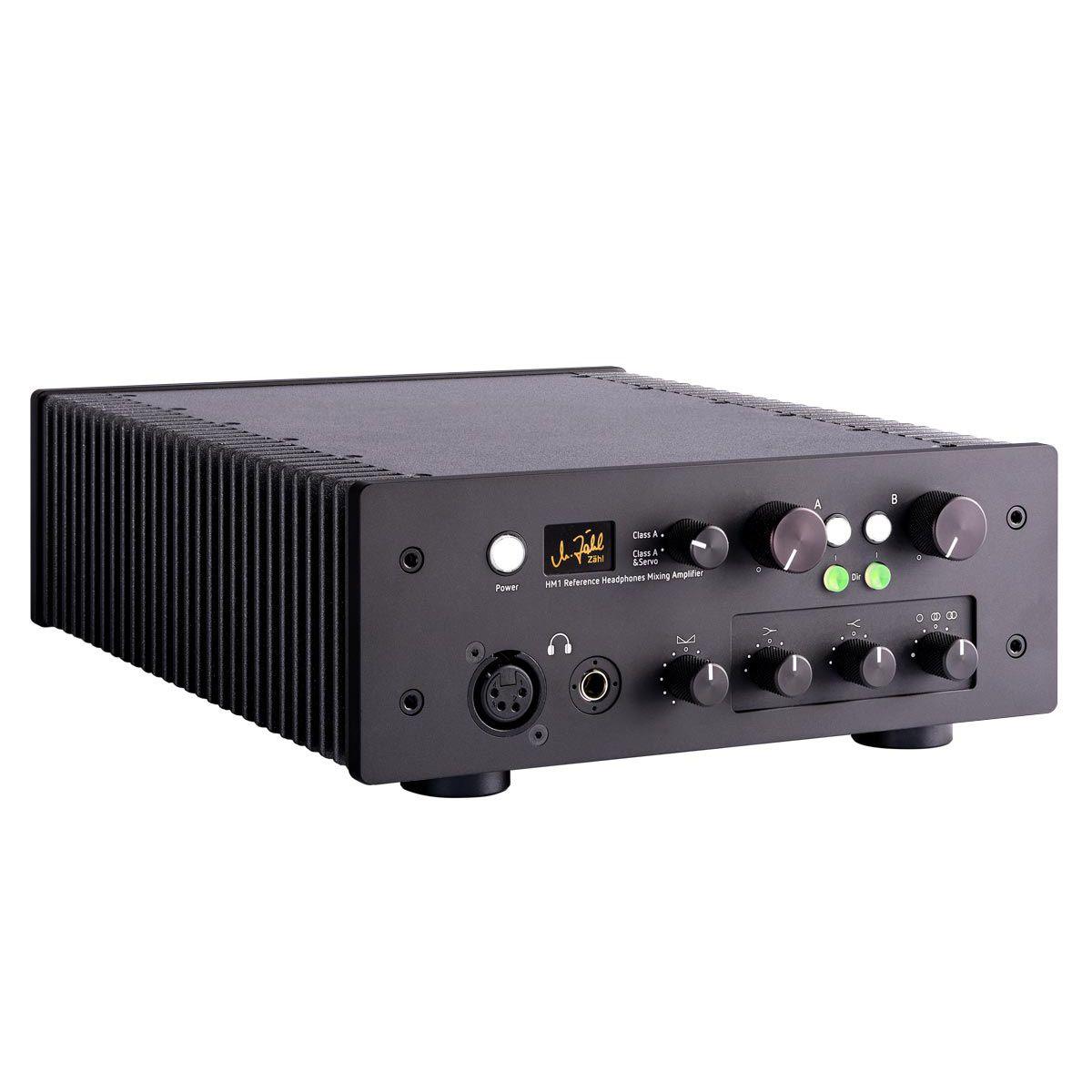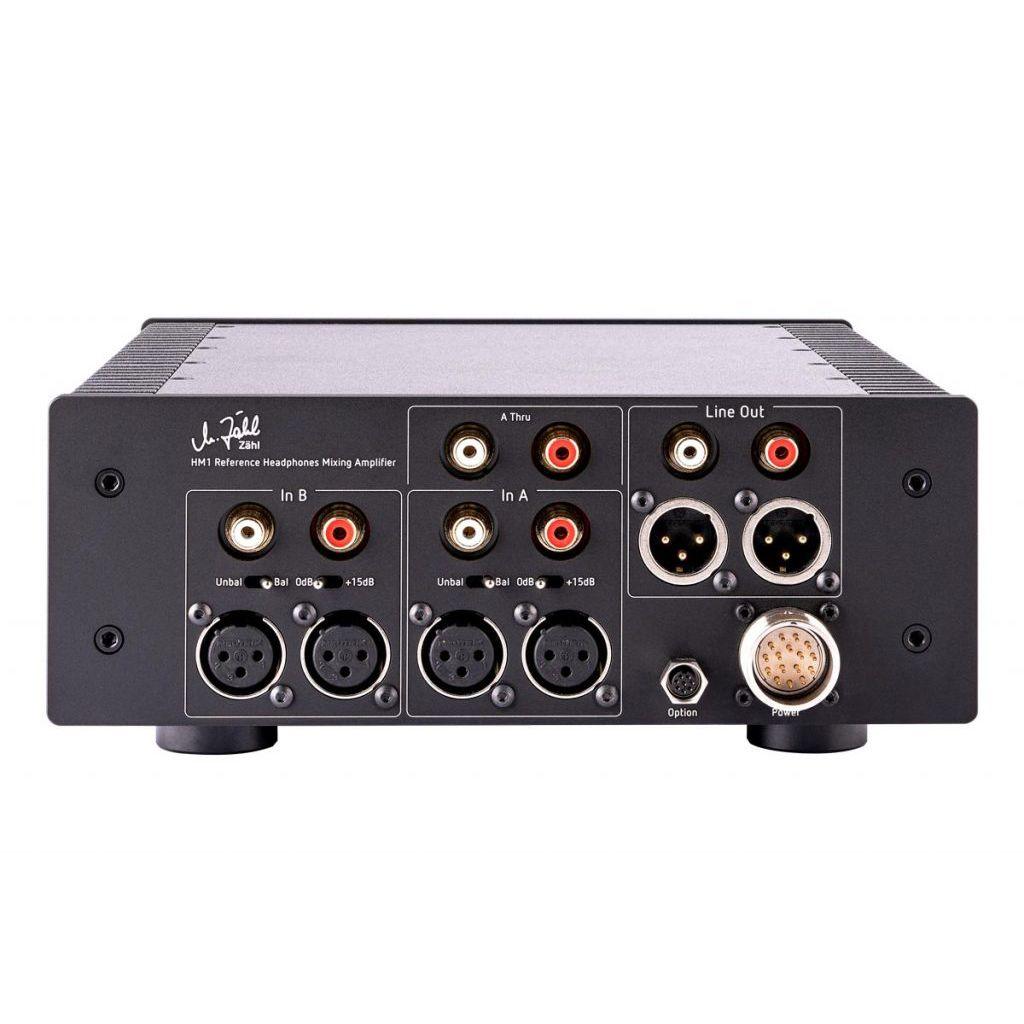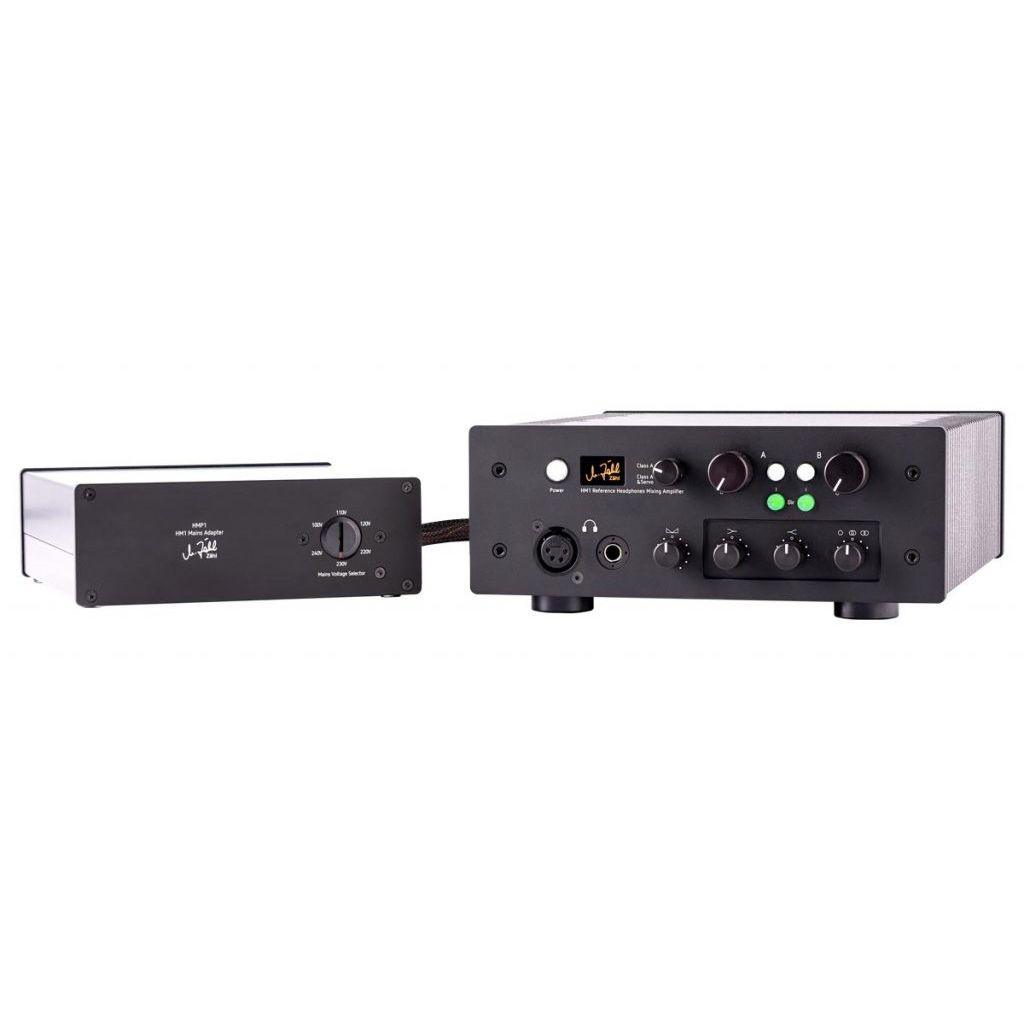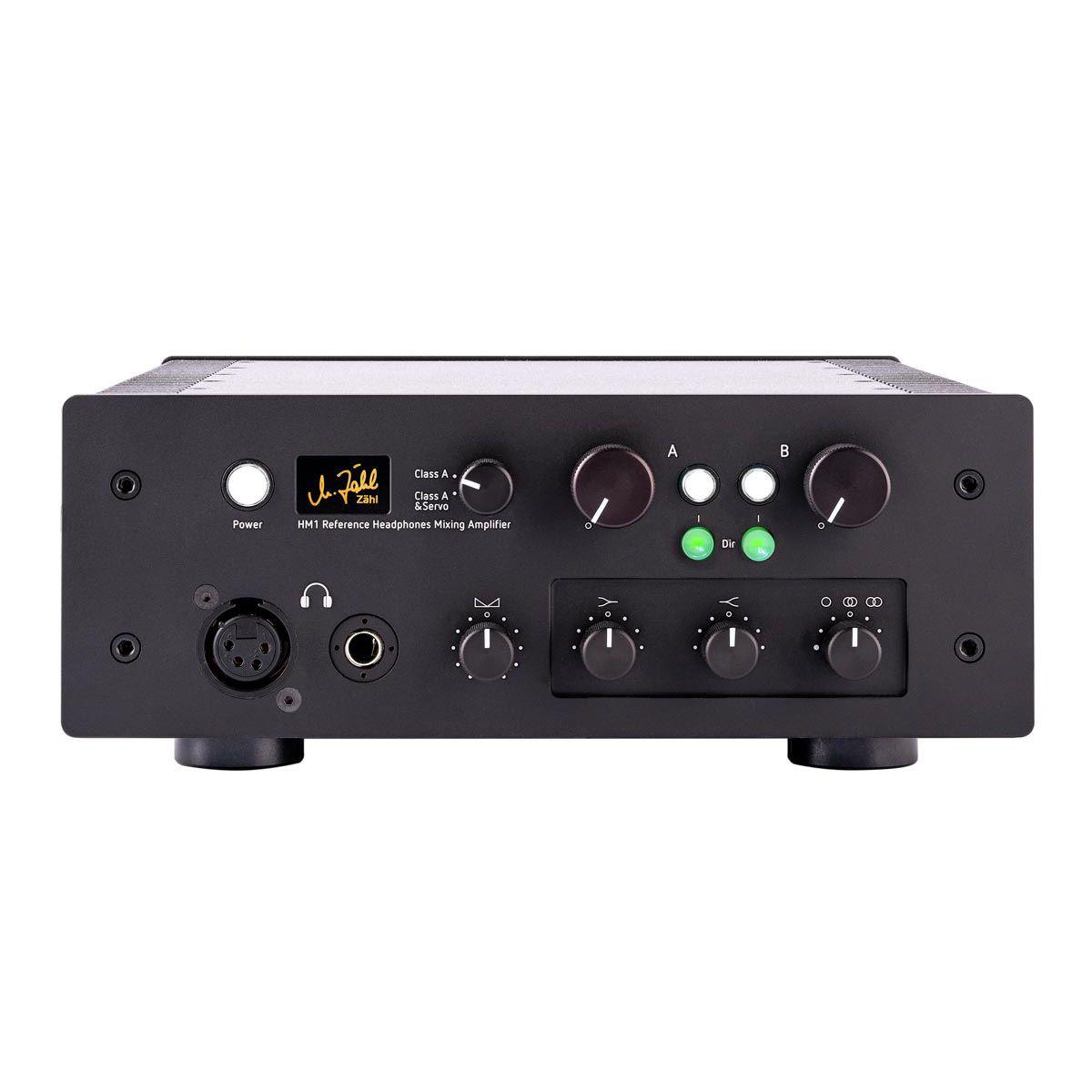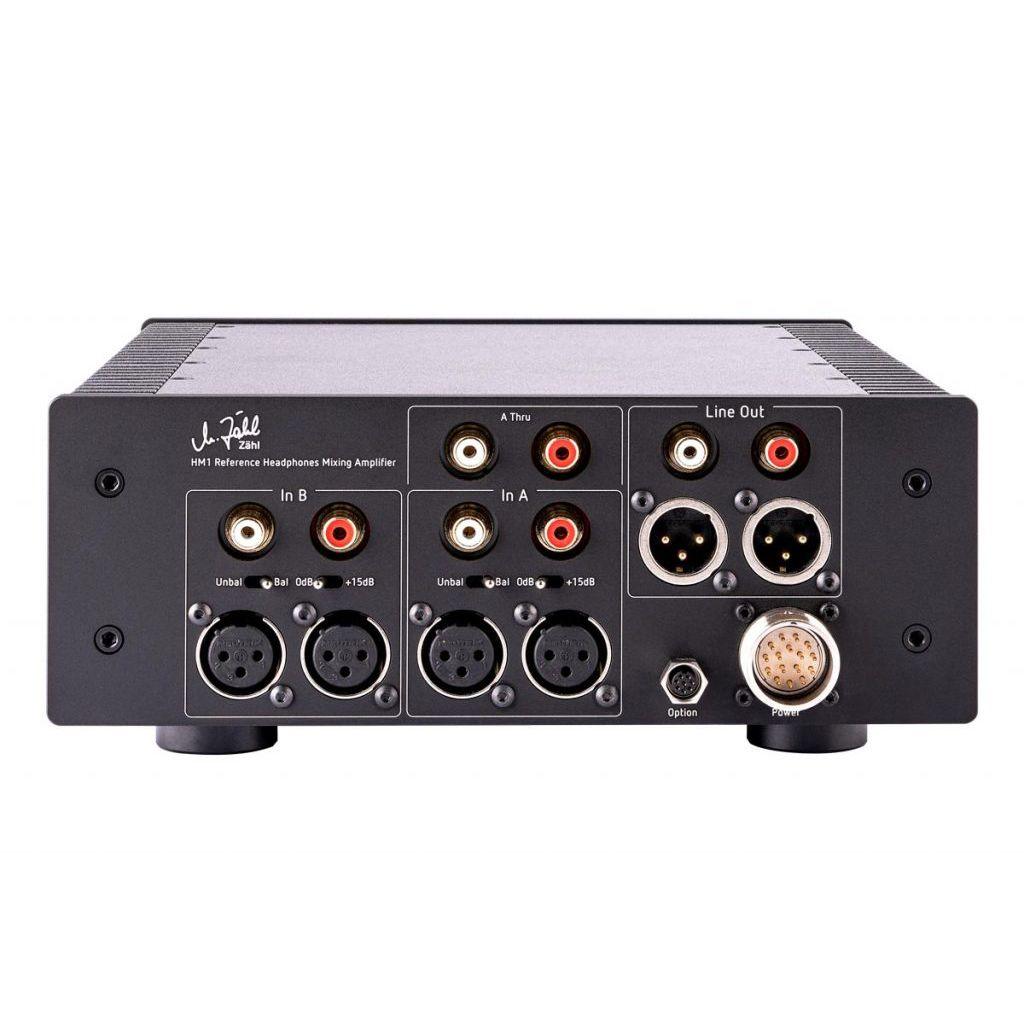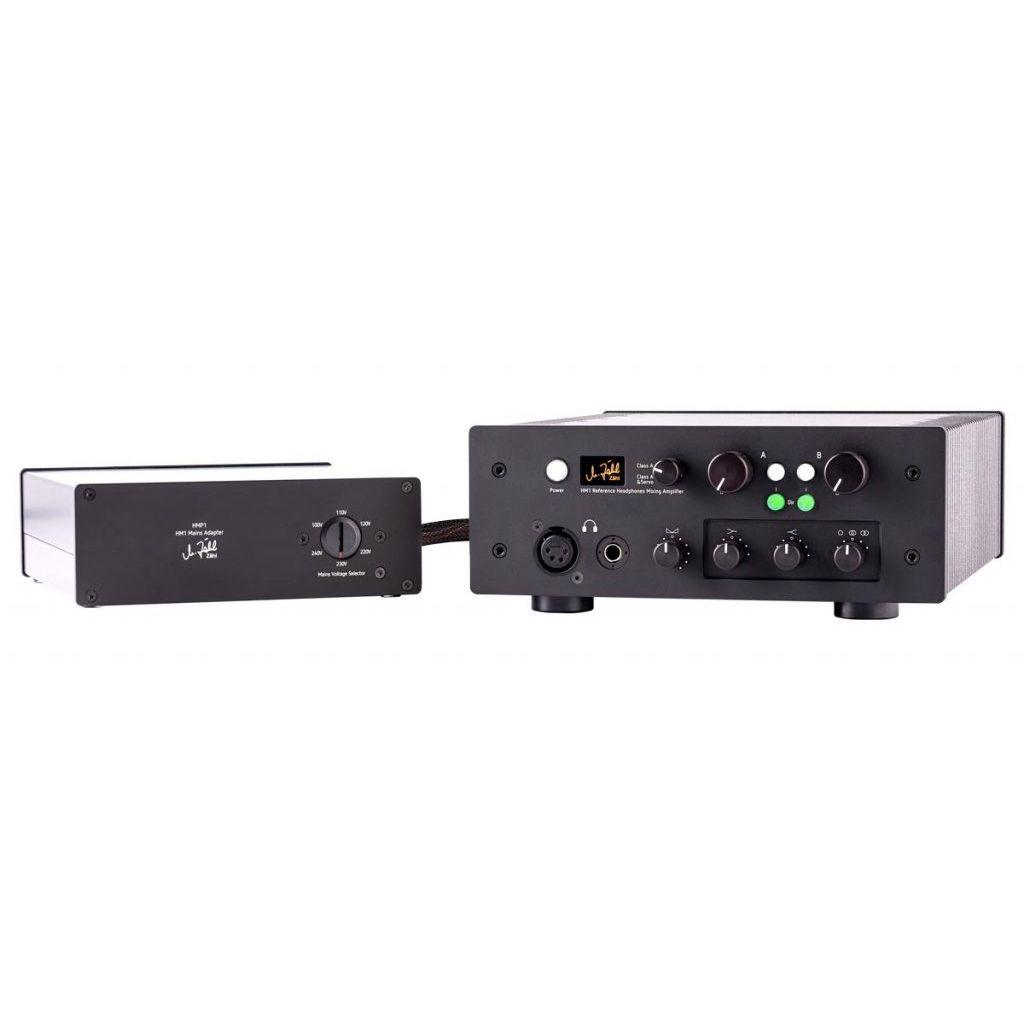Zähl
Zähl HM1 Reference Desktop Headphone Amplifier
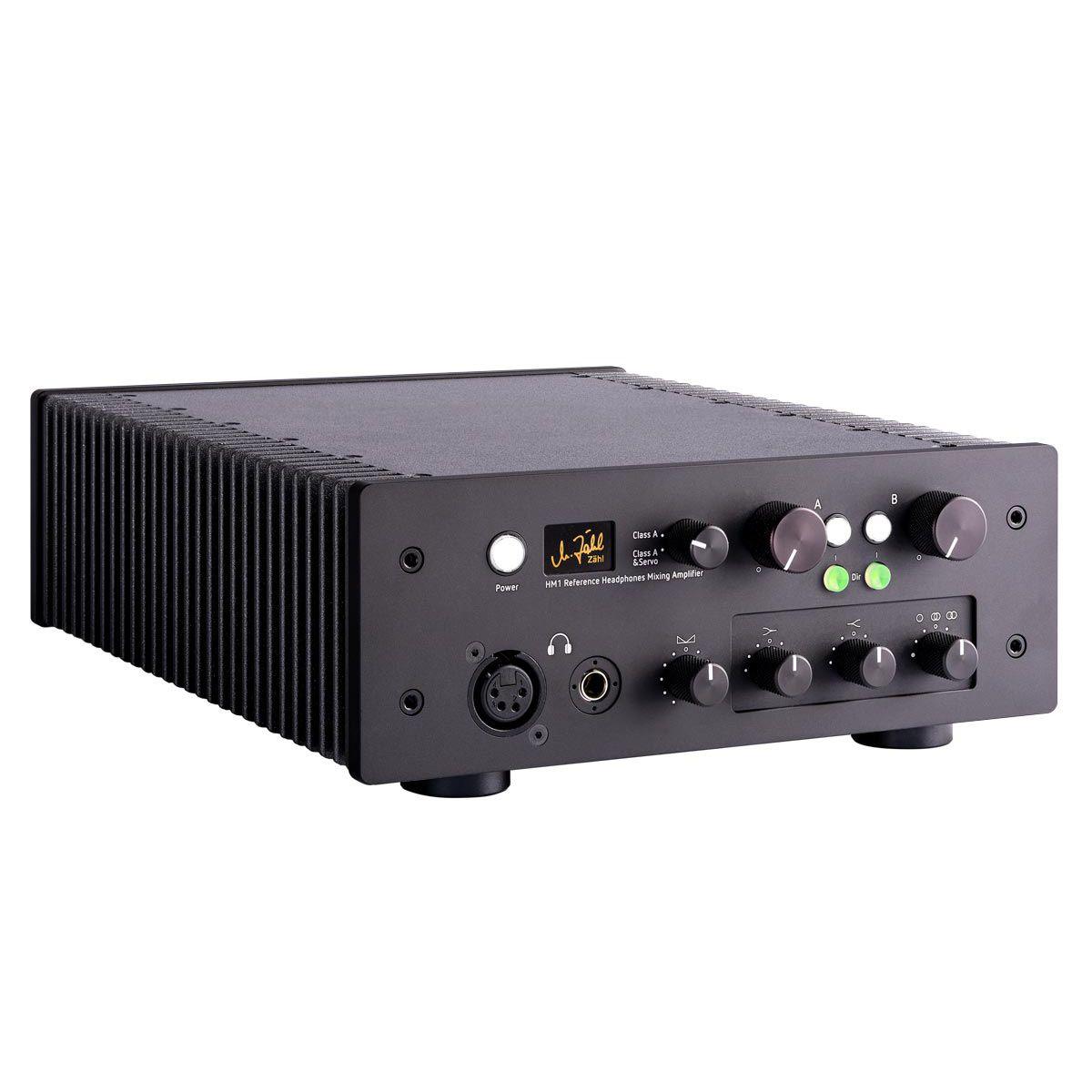
Zähl HM1 Reference Desktop Headphone Amplifier
Zähl HM1 Reference Desktop Headphone Amplifier
Amplifier type
More information
Translation missing: en.products.product.amplifier_type_info
Solid-state
Connectivity
More information
Connectivity refers to the method in which the headphones connect to the audio source. Headphones can be either wired or wireless.
Wired
Portability
More information
DACs and amplifiers can either be carried around or meant for static desktop use
Not Portable
No Fee 365-Day Returns*
Don’t love it to start? Don't worry, you have 365-days to return with no fees*.
Description
Note*: Current prices reflect the tariffs imposed on EU goods being imported into the US. If those tariffs are lifted, prices will return to normal pricing and any purchases at the tariff price will have 1 year of price protection on their unit.
2025 Shipments now available for pre-order with only 17 in North America. 7 of 17 remaining
Only 50 Zahl HM1s are being made annually. Headphones.com has secured 17 units for North America in 2025
Headphones.com is the exclusive place in North America to buy the Zaehl HM1 Reference Desktop Mixing Headphone Amplifier.
Highlights
- Pure analogue design
- Consistent dual-mono layout
- Logic circuits without clock generators
- Straight linear power supply with power transformer in external housing
- No-compromise selection of components
- No-compromise interior and exterior construction
- Perfect impulse reproduction
- Ultra wide frequency response
- Extremely low impedance output precisely controls complex loads
The Zähl (pronounced Zaehl) HM1 is high-quality fully analogue, Class A reference headphones mixing amplifier designed with no compromise to offer an unprecedented level of transparency and detail that will thrill the most discerning professionals and audiophiles alike.
The Zähl HM1 also includes two different stereo source input with a cross-fade, Precise two band EQ and a stereo base control. Its design is meant to offer the most true-to-life reproduction possible.
Two Different Power Stage
The Zähl HM1 features two operation modes Class A and Class A + Servo. The first mode delivers the purest sound with no crossover distortion and no artifacts causing negative feedback. The second mode uses the same Class A circuit but adds negative feedback to correct errors that occur between the power amplifier and headphones. While both modes offer technically superior performance, each mode will appeal to different users.
Mixing Features
The HM1 includes two input sources which can be used for critical A/B comparison of different DA converters, cartridges or comparing different mixes or effects. Each input has a dedicated volume control for precise level matching. Each input can be hard switched or gently cross-faded.
The two sources can also be used to be mixed together. The new mix is fed to the headphones as well as the line outputs which can be used to connect to a recording system or active speakers.
Sound processing
The HM1 includes a subtle two band EQ with fixed frequencies and gentle boost or cut. Unlike traditional tone controls found on amplifiers, it uses proven circuits used in studios to make subtle tonal accent changes rather than affecting the sound character.
The HM1 also includes a Stereo Base control akin to the circuit used in their IM1 module or AM1 console which lets you widen the stereo field without losing information in the Mid channels. This processor is useful to check the spatiality of a mix ranging from mono (fully left) to really wide. The Stereo base stage can be completely switched out of the signal to maintain the signal as pure as possible.
A Balance control also lets you compensate for any balance discrepancy whether in the mix, the headphones or the user’s hearing. The 21-position detent allows compensating for volumes up to 2.5dB on either side.
Dual Mono Design
The HM1 uses a dual mono design strictly separating left and right channels, avoiding any interference between channels. Each channel has its own power supply for both the preamplifier and power amplifier stage. Furthermore, the Mains transformer includes independent and completely potential-separated windings for each channel while filtering, voltage regulation and rectification are individual to each channel.
The headphone amplifier includes a 6.5mm Jack output and an XLR 4-pin connector. Using the latter ensures the perfect maintenance of the dual mono principle with no interference occurring at any point.
The Power supply uses a purely linear design and includes a wide range input. Using one of the best interference filters available, the mains input can be set to operate at the following voltages: 100V, 110V, 120V, 220V, 230V, 240V.
Power Stage

Class A - HM1 realisation
The HM1 power stage provides massive power reserves, which is already evident from the fact that it consumes almost 40W in idle mode. The output power is more than sufficient for any application, and in the millisecond range it is increased substantially. The output resistance is remarkably low. The optimum operating point of the power stage was first specified by theory, then by measurements on the sample units and finally fine-tuned during numerous listening tests with experts, especially mastering engineers. The same applies to the selection of components. This meticulous way of design largely compensates for the possible disadvantages of Class A described in the theory paragraph below.
Class A & Servo - HM1 realisation
To take Class A one step further, we implement an idea which is as simple as it is ingenious: We take the best of Class A and the best of negative feedback amplifiers and put it together: Class A operation is supplemented by negative feedback ("Servo"). Since there is no crossover distortion, there is nothing for the feedback circuitry to correct. Rather, it only corrects the errors which result from the interaction between the power amplifier and the headphones. The feedback path is designed in such a way that no artefacts are created by the correction. The output resistance drops to a value which is smaller than the sum of headphones cables and connectors. In this way, headphone systems can be controlled precisely. One can say that with the HM1, any headphones sound as they should.
Why Class A and Class A & Servo?
The previous paragraph may lead to the conclusion that the optimum is achieved with Class A & Servo operation. So why do we still have the switching option? Quite simply because we judge our circuits by ear. Our Class A amplifier was developed with the highest musical demands in mind. We experienced that is does not sound the same as the servo version, but it sounds equally outstanding. Depending on headphones, music and personal preference, the user can make his choice. Even we were surprised to find that despite clearly different characteristics and measurement results, the hearing difference is rather subtle.
A LITTLE THEORY
Class A
Advantages: no crossover distortion at the output transistors and no artefacts caused by negative feedback.
Disadvantages: The internal resistance of the output transistors and usually also the emitter or collector resistors are in series with the load. Simplified, one can say that the material properties of the output stage components substantially determine the sound. And since both the resulting internal resistance of the output stage and the resistance of the load, i.e. the headphones, are complex items, the result is also complex: it is quite common that certain combinations of even very high-quality amplifiers and headphones do not produce optimal results. Experienced audiophiles know this experience.
Class AB with negative feedback
Advantage: Any error at the output caused by the effects described above is "corrected" by a negative feedback circuit. And furthermore, the output resistance of the power amplifier, as long as there is no overload condition, theoretically approaches zero; practically it is in the 2-digit milli-ohm range. The complex internal resistance of a headphone system is almost equalised by the low impedance output. A headphone system is therefore tightly “guided” by the power amplifier.
Disadvantage: The crossover distortion occurs first, then it is corrected. Thus, negative feedback control (at least theoretically) always runs a little behind the action, which can lead to artefacts in the signal. However, modern negative feedback audio power amplifiers are usually not purely Class AB. Very effective techniques are used to keep crossover distortion low without having to use the costly and power-intensive Class A technique. Certain techniques are used in the negative feedback signal, so that the "lagging" of the correction almost no longer plays a role.
Mixing Stage
A/B comparison
CConcerning the reference quality of the HM1, the idea of using it for critical A/B comparisons is most obvious - be it for evaluating different sources like D/A converters or cartridge systems in the high-end range or comparing different mixes or sound processing options in the professional range.
For this purpose, the HM1 has two inputs with independent level control and on/off buttons. Exact level matching is essential for a critical A/B listening comparison. By the way, the on/off function can also be operated via a cable remote control, which facilitates a blind comparison.
Cross-fade
The mixing stage can also be used to crossfade two sources. A very musical alternative to the otherwise usual "hard" switching.
Mixing two sources
And of course this stage is suitable for mixing any two sources. A new programme is created from two music programmes. This new programme can then not only be listened to in the headphones but is also available at the line outputs on the back of the unit, which can be used for connecting active speakers and recording units. This turns the HM1 into a 2-channel stereo mixing console with reference quality.
Also important: If only one channel is used, the mixing stage is not superfluous "ballast". An unused channel is switched off directly at the input stage and thus cannot negatively influence the signal integrity. This switch-off is realised via relays and is triggered as soon as a volume control is set to minimum or a channel on/off button is in the off position
Sound Adjustment
This stage is not designed to massively affect the sound. As a rule, all audio gear connected to the HM1 is of extremely high quality, a classic tone control would not be appropriate.
However, it can be advantageous to make fine, precise adjustments in the frequency response domain, depending on the headphones, music programme or even personal preference.
Low and high frequency adjustment
The low and high frequency adjustment, each in three fixed steps as boost and cut, is primarily designed for musical purposes. We have further developed proven circuits from studio technology to achieve a stage which sets subtle accents rather than changes the sound character. The basis are filters with selected components, of course all circuits are precisely switched by relays.
Professionals use the functionality, for example, to find out whether a mix is balanced in terms of low and high frequencies or can still be optimised.
Stereo Base control, a little theory
A special feature is the possibility to adjust the stereo width. The perception of spatiality when listening with headphones differs from listening with loudspeakers. Instead of a cross-feed circuit, we use our stereo base width setting. It is based on the mid/side technique which is commonly used in professional studios. It provides additional benefits.
The stereo signal is converted into a mid signal (in simple terms, what L and R have in common) and a side signal (in simple terms, what distinguishes L and R). Summing mid and side signals in a 1:1 ratio will result in the original stereo signal. However, if you change the ratio between mid and side before summing them, you change the stereo base width. In our circuit, we leave the mid signal as it is. We only adjust the level of the side signal. If we lower the level, the stereo image becomes narrower, if we raise the level, the stereo image becomes wider.
Stereo Base control, what it does
You have direct access to the perception of spatiality. With a music programme which seems too "wide" in the headphones, one will turn the control one or two steps to the left. If you perceive a recording as too "dry" (centred), turn the control one or two steps to the right. The leftmost position is mono. This is the preferred setting for early stereo recordings, when individual instruments have been mixed to the extreme left or right - without spatial reference.
Professional users check the spatiality of their mix with this function and may discover possible problems, especially in the extreme positions.
Also important: With the DIR (Direct) button, this stage can be completely switched out of the signal path. In this way, the purist approach is taken into account.
Balance
A precision potentiometer with 21 detents is available for balance control. The centre position is perfectly calibrated and haptically clearly defined. In fine increments, left/right volume differences of up to about 2.5 dB - caused by music programme, headphones or individual perception - can be compensated.
Headphone Outputs + Balanced Connection
XLR 4-pin connector and ¼ inch jack socket are wired in parallel and are intended for alternative use. Theoretically, you could use both at the same time, the power amplifier is strong enough. However, for a reference quality listening experience, we do not recommend such use.
Ideally, the XLR 4-pin is used in conjunction with balanced wired headphones. In this case, the signal currents of the two power amplifiers are not mixed with each other, mutual interference is impossible. The HM1 can unfold its full quality (also refer to chapter "Dual Mono Design").
Dual Mono vs. Balanced amplifier design
With its dual mono design, the HM1 features the same advantages as a balanced output stage but avoids the drawbacks.
The drawbacks of a balanced output stage are the significantly increased number of electronic components - a balanced output contains two output stages per channel which work in reverse phase. Two output stages result in doubling the output impedance. More components result in an increased risk of non-linearities.
¼ inch jack compatible
Another advantage of the HM1 architecture is that unbalanced headphones with ¼ inch jack plugs can also be operated without any problems.
Line Inputs
Balanced signals (XLR) or unbalanced signals (RCA) can be connected to Line Input A and Line Input B. XLR and RCA must not be used simultaneously on the same input. The Bal/Unbal switches set the inputs independently to balanced (Bal) or unbalanced (Unbal) mode.
Each input provides another switch which adds an extra 15dB gain. This ensures that even signals with low levels can be processed without any problems.
Line Outputs
The signal at the line outputs corresponds to the signal in the headphones, except that it does not pass through the headphones amplifier, but through balanced or unbalanced line output stages and is routed to connectors on the rear.
Connect active speakers, power amps or other gear
Balanced and unbalanced outputs may be used simultaneously to drive power amplifiers, active speakers, level meters or other components. If, for example, the HM1 is used for comparing two stereo sources, the result may be recorded using one of the outputs. The same applies when using the HM1 as a mixing console.
"A Thru" Output
The "A Thru" signal is tapped from Input channel A, post input amplifier. The switchable 15dB gain stage at Input A affects the “Thru” signal. The Thru output has an unbalanced output stage.
Setup your own test bench / experimental bench
A signal connected to Input A can thus be routed to another application without loss. Application example: "A Thru" is routed to a sound processing device or effects unit, the output of this unit is fed to Line Input B. The ratio between original and processed signal can be set by the A/B volume controls. Of course, this setup is also excellent for testing any device: Channel A supplies the original, channel B the signal coming from the unit to be tested.
Dual Mono Design
The idea
The idea behind strictly separating left and right channels is to keep any interference away from the circuits. A term like “crosstalk” does not get to the core of the matter. Music signals usually have left/right references, so that an extremely low crosstalk value - moreover, usually measured with sine waves - does not mean so much. But with music highly energetic signal pulses occur, and then high currents are individually demanded by the output stages. It is extremely important that in these cases there is no coupling via a common power supply or via ground lines carrying signal current. Only this way an amplifier can produce absolutely undistorted output signals.
Realisation inside the HM1
In the HM1, the power supplies for left and right channels are separate, for preamplifiers and power amplifiers. The mains transformer has independent, completely potential-separated windings for each channel. Rectification, filtering and voltage regulation for each channel are individual. For logic circuitry and front-panel indicators, there is another winding and separate rectification, filtering and voltage regulation.
The ground potentials of the two channels are connected to each other at one point only, but this is done purely as potential equalisation; it is impossible for signal currents to be mixed.
Optimal output connection
If the XLR 4-pin output is used in combination with balanced wired headphones, the dual mono principle is implemented in full consequence.
When using the jack output, the ground wires of both channels are connected in the jack socket and the jack plug of the headphones. The use of headphones with jack plugs therefore is not that ideal. In the HM1, however, an optimised ground routing ensures that the disadvantageous effects are as low as possible.
(also refer to chapter: Headphones Outputs / Balanced Connection)
Power Supply
Mains voltage and mains transformer are always potential sources of interference - consequently, we have outsourced them to the HMP1 mains adapter.
The mains adapter also contains a standby power supply unit which delivers a stabilised low voltage. This voltage is applied to the Power switch on the front panel of the HM1 and serves to switch on the actual mains transformer via a relay.
Worldwide operation
The standby power supply has a wide-range input, is a purely linear design and complies with the common standby power regulations.
The mains input is equipped with one of the best interference filters available and can be set for operation on the following voltages: 100V-110V-120V-220V-230V-240V.
The mains switch on the back of the HMP1 can be used to completely de-energise the unit.
Variable cable length
The connecting cable between the mains adapter and the main unit carries potential-separated low voltages only. The length of the cable is variable over a wide range and can be defined by the user when ordering.
Specifications
| Title | Description |
|---|---|
| Line Inputs |
Balanced – Impedance 20KΩ – max. level +23d Unbalanced – Impedance 20KΩ – max. level +23dBu |
| Line Outputs |
Balanced – Impedance 47Ω – max. level +23dBu Unbalanced – Impedance 47Ω – max. level +23dBu |
| Headphones Output |
Impedance Class A = 0,8Ω Class A & Servo 0,045Ω max. level +23,5dBu (+/-16,5V) |
| Output Power per Side |
RMS 4W/30Ω; 7W/15Ω Peak 7,6W/30Ω; 11W/15Ω; 12W/10Ω (18W for 1,5ms) |
| Frequency Response |
10Hz ... 30kHz -/+0,05dB 1Hz ... 500kHz better than -3dB at Headphones Output @ +6dBu |
| Gain |
Line/Line – 0dB – +15dB switchable on rear panel Line/Headphones – +6dB – +15dB switchable on rear panel |
| Noise |
20Hz ... 20kHz flat RMS / A or B active XLR/RCA Output -102dBu Headphones Output -97dBu |
| Headphones Output THD (Total Harmonic Distortion) |
Class A = 0,07% Class A & Servo = 0,0005% (typ. @ +20dBu/7,75Veff / 30Ω load / 2W RMS) |
| Power Supply |
Mains Voltage – AC 50-60Hz, switchable 100V / 110V / 120V / 220V / 230V / 240V Power Consumption – typ. 40W, max. 60W |
| HM1 Headphone Amplifier Weight and Dimensions |
WxHxD approx. 225 x 90 x 300mm approx. 5kg |
Our review
Video review
Reviews
